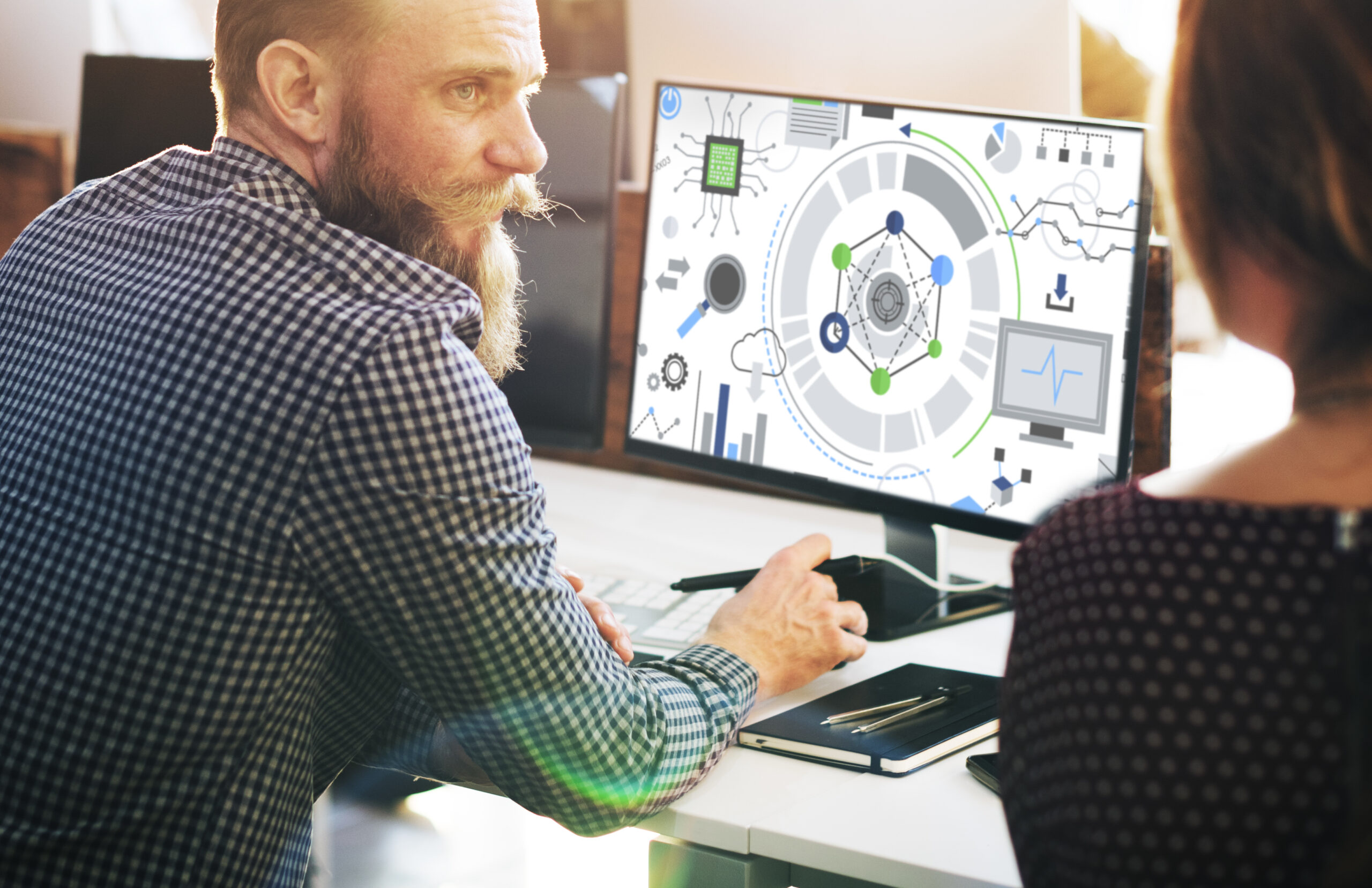In the realm of computer graphics, the magic that transforms plain 3D models into visually captivating masterpieces lies in the art of texturing. Texturing is the process of applying images or patterns to the surfaces of 3D models, enhancing their realism and visual appeal by simulating details such as colors, patterns, and surface properties. This article delves into the nuances of texturing, its purpose, types, workflow, and the challenges it presents. Additionally, we will explore how Curate Partners can assist businesses in finding specialized talent to excel in this critical aspect of 3D graphics.
The Purpose of Texturing
Texturing serves several essential purposes in computer graphics:
1. Realism
Texturing adds realistic details to surfaces, making objects in a virtual environment look more lifelike. By simulating materials such as wood, metal, fabric, and more, textures bring a sense of authenticity to digital creations.
2. Enhanced Detail
Textures provide fine details such as scratches, bumps, and imperfections that contribute to the overall visual quality. These details are crucial for creating convincing and immersive experiences in applications ranging from video games to virtual reality.
3. Visual Variety
Textures enable artists and developers to create visually diverse scenes by applying different patterns and colors to various surfaces. This variety enhances the aesthetic appeal and richness of the visual experience.
4. Ambient Occlusion
Textures can simulate ambient occlusion, enhancing the perception of depth and shading in the absence of direct light. This effect adds realism to the way objects interact with light in a scene.
Types of Textures
Texturing involves using different types of textures, each serving a specific purpose:
1. Color (Albedo) Maps
Color maps represent the base color of a surface, defining how light interacts with it and contributing to the overall color of an object. These maps are essential for establishing the primary appearance of materials.
2. Normal Maps
Normal maps simulate surface details by encoding information about surface normals. They create the illusion of bumps, dents, or other intricate details without altering the actual geometry, enhancing the visual complexity of the model.
3. Specular Maps
Specular maps control the specular highlights on a surface, determining how shiny or reflective an object appears. They influence the intensity and color of specular reflections, adding depth to the material’s visual characteristics.
4. Displacement Maps
Displacement maps modify the geometry of a surface by displacing vertices based on the values stored in the map. This creates actual physical variations in the surface, adding realistic depth and detail.
5. Ambient Occlusion Maps
Ambient occlusion maps define areas where light is likely to be occluded or scattered, contributing to the simulation of global illumination and shading. These maps enhance the perception of depth and realism.
6. Emissive Maps
Emissive maps specify areas of an object that emit light, allowing for the simulation of self-illumination or glowing effects. This is particularly useful for creating elements like neon lights or glowing screens.
7. Roughness/Metalness Maps
Roughness and metalness maps provide information about how rough or smooth a surface is, as well as whether it is metallic or dielectric. These properties influence how light interacts with the material, contributing to its overall appearance.
UV Mapping
UV mapping is the process of unwrapping a 3D model’s surface to create a 2D representation (UV map) that corresponds to the model’s geometry. This mapping allows textures to be applied accurately to the model’s surfaces, ensuring that each part of the model corresponds correctly to the texture.
Texturing Workflow
The texturing process involves several key steps:
1. Selection of Textures
Artists or designers choose or create appropriate textures for different surfaces, considering the material properties they want to simulate. This step is crucial for achieving the desired visual effect.
2. UV Unwrapping
The 3D model is unwrapped, and a UV map is created, providing a 2D representation of the model’s surfaces. This map serves as a guide for applying textures accurately.
3. Texture Editing
Artists use graphic editing software to paint or modify textures, adding details, colors, and patterns. This step allows for creative expression and customization of the model’s appearance.
4. Texture Application
Textures are applied to the 3D model using UV mapping coordinates, ensuring that each part of the model corresponds correctly to the texture. This step involves fine-tuning the placement and alignment of textures.
5. Shader Integration
Textures are integrated into the shaders of the rendering pipeline, allowing for interactions with lighting and other effects. Shaders play a crucial role in determining how textures respond to light and other environmental factors.
Challenges in Texturing
Texturing presents several challenges that artists and developers must navigate:
1. Seamless Texturing
Ensuring that textures seamlessly tile across a surface without visible seams can be challenging. Artists must carefully design textures and UV maps to avoid noticeable transitions.
2. Resolution
Balancing texture resolution with performance requirements is crucial, especially in real-time applications. High-resolution textures provide greater detail but can impact performance, necessitating optimization.
3. Artistic Consistency
Achieving consistent artistic style and quality across different textures is essential for maintaining visual coherence. Artists must adhere to style guides and collaborate effectively to ensure uniformity.
Applications of Texturing
Texturing is widely used in various fields:
1. Video Games
Texturing is fundamental in video game development, where it enhances the realism and immersion of game environments and characters. From detailed landscapes to intricate character designs, textures play a vital role in creating engaging gaming experiences.
2. Virtual Reality
In virtual reality, texturing adds depth and realism to virtual environments, enhancing the user’s sense of presence. Realistic textures are crucial for creating believable VR experiences.
3. Computer-Aided Design (CAD)
Texturing is used in CAD applications to visualize materials and finishes in architectural and product designs. By applying realistic textures, designers can present accurate representations of their concepts.
4. Simulations
In simulations, texturing enhances the visual fidelity of models, making them more realistic and effective for training, research, and other applications. High-quality textures contribute to the accuracy and immersion of simulations.
5. Animations
In animation, texturing adds detail and character to animated models, bringing them to life. From animated films to visual effects, textures are essential for creating visually compelling narratives.
How Curate Partners Can Help
At Curate Partners, we understand the complexities and challenges of texturing. Our consulting services are designed to help businesses optimize their texturing processes and find specialized talent to support their 3D projects.
Specialized Talent Acquisition
Finding the right talent is crucial for the successful implementation of texturing in 3D projects. Our team at Curate Partners specializes in identifying and recruiting top-tier professionals with expertise in texturing, UV mapping, and shader integration. We ensure that our clients have access to the best talent in the industry, enabling them to create visually stunning and realistic models.
Strategic Consulting
Our consulting services extend beyond talent acquisition. We work closely with our clients to develop and refine their texturing workflows, ensuring alignment with their project goals and artistic vision. From initial concept development to post-production optimization, we provide comprehensive support to maximize the success of texturing in 3D projects.
Market Insights and Trends
Staying ahead of market trends is essential for maintaining a competitive edge. At Curate Partners, we continuously monitor industry developments and emerging technologies to provide our clients with valuable insights. We help businesses adapt to changing market conditions and leverage new opportunities in the texturing landscape.
Compliance and Security
Ensuring compliance with industry standards and security protocols is critical for protecting both intellectual property and user data. Our team of experts at Curate Partners assists clients in navigating regulatory requirements and implementing robust security measures to safeguard their texturing assets.
Conclusion
Texturing is a fundamental aspect of computer graphics that involves applying 2D images (textures) to 3D models to enhance their appearance, realism, and visual detail. By understanding the purpose, types, workflow, and challenges of texturing, developers and artists can create visually captivating and immersive digital experiences.
At Curate Partners, we are committed to helping businesses unlock the full potential of texturing. Our specialized talent acquisition and strategic consulting services empower our clients to optimize their texturing processes and stay ahead in a competitive market. Whether you’re a startup looking to enhance your 3D models or an established company seeking to refine your texturing workflows, Curate Partners is your trusted partner in achieving success.



